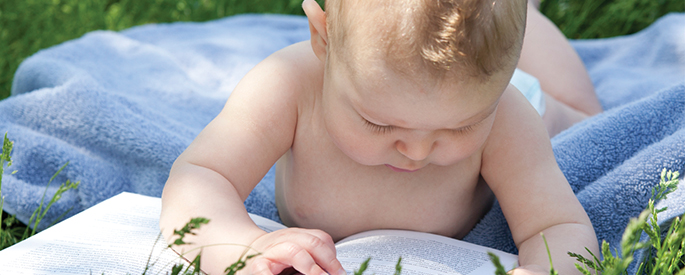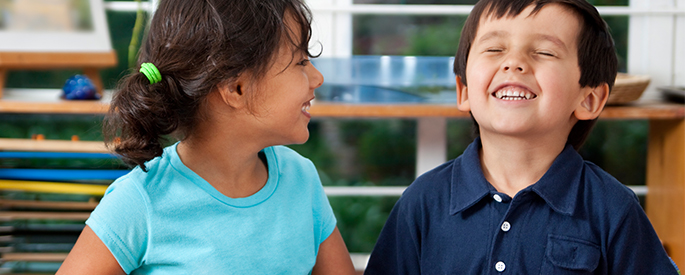Resources for Supporting Literacy Development (Birth - 4)
Looking at books with your child every day is one of the most important things you can do for their future. Sharing books together strengthens children’s foundation for learning. Pointing at pictures in a book, saying rhymes, singing songs, writing words, and playing together makes a child more ready for school. A child's ability to learn grows from back and forth interactions, not a screen or educational toy. Plant the seed for lifelong learning by growing a reading relationship with your child.
Academic standards tell us what students should know and be able to do in the classroom. The Wisconsin Standards for English Language Arts apply to students in kindergarten through twelfth grade. The Wisconsin Model Early Learning Standards apply to children from birth through age 5. Please review this DPI alignment report provides information on the connections between Wisconsin's Standards for English Language Arts and the Model Early Learning Standards.
Literacy Programs for Families:
- Visit the Library Services page for Early Literacy and Child Development resources.

Babies
At This Age
Babies enjoy and respond to repeated sounds, words, and rhymes. Babies love to imitate sounds they hear and can explore and enjoy books with their eyes, ears, and mouth. As babies grow, they will point to and name pictures in a book when asked.
Babies smile and giggle when hearing rhyming words; e.g., funny bunny. Babies move their arms and legs when they hear a familiar, happy, sing-song voice. They can recognize a favorite book by its cover, point to pictures in a book and make sounds or smile. Babies laugh, smile, and enjoy hearing repeated words; e.g., "The wheels on the bus go round and round, round and round, round and round.
Reading Together
Babies recognize the faces and voices of those who are familiar to them and will begin to connect books with people they love most. Make time to read every day-even for just a few minutes at a time. Borrow or buy books that have colorful pictures and some words that relate to the pictures; e.g., pictures of animals with words telling what the animal says. Model for babies how to hold and use books properly.
When reading, babies will begin to look at pages in the book as you read. Imitate the sounds that objects make: A train goes "choo-choo." Hold babies and use a happy, sing-song voice while reading. When reading stories, involve babies by asking them to point to a picture and ask, "What's this?" Talk about the picture. Babies learn to pay attention to pictures and interact with the story in the book.
Like a garden that is ready to be planted, baby’s brains are ready to learn. At this age, babies need to learn from you how to communicate (speak, look, listen). Talk, sing, and read to babies. Even if it seems that they are not paying attention, they are learning how to use language from the best teacher—YOU!

Toddlers
At This Age
Toddlers repeat words in rhymes and actions. They might ask for and join in saying favorite rhymes and songs that repeat sounds and words, like "Twinkle Twinkle Little Star." Toddlers explore, repeat, and imitate alphabet-related songs and games. They understand that words in the book carry a message. Toddlers will begin to use writing tools to make marks.
After you finish reading the words on one page, ask them to reach out and turn the page. When looking at a picture book, ask them to name animals or other images. Toddlers might point to some words as a story is read. They notice that the words rather than just the picture have meaning—they begin to understand that you are reading the word under the picture on the page.
Reading Together
Toddlers have short attention spans, so it's okay if they don’t sit with you for the whole book; some story time is better than no story time. While you read, point to familiar words and pictures on the page. Toddlers will begin to understand that words can be put together to tell the story and hold the message. Invite them to hold the book and/or turn pages as you read. Ask them open-ended questions, such as, "Why do you think this happened?"
Let toddlers choose their favorite book to read in the afternoon or for bedtime. Toddlers love rhythm, melody (even off-key), and the magic of music. Play CDs or playlists of favorite children's alphabet songs and games. Stories and music benefit children more than any kind of screen time. Help toddlers make their own book by letting them draw pictures while you write the story for the pictures.
Like a plant that is taking root in the soil, toddlers are learning about the world around them, even if you can't quite easily observe all they know. Toddlers' brains need to experiment with how things look, feel, sound, smell, and taste. Understanding colors, letters, numbers, animals, and opposites gets them ready for school. Reading favorite books again and again helps build important brain connections.

Preschoolers
At This Age
Children will ask you to read them a story in a book. Preschool-age children begin to recognize and match sounds and rhymes in familiar words. They will be able to tell the difference between letters and other symbols. Introduce your emerging reader to letters and their sounds in familiar words, especially in names.
As early readers, children will begin to hold books the right way and view one page at a time from the front to the back of the book and know that the book has a title, author, and illustrator. In time, they will understand the difference between letters, words, and sentences. Early readers choose books to read that have some familiar words in them. Preschoolers may pretend to read a favorite book in their own words to you or another child.
Reading Together
When reading a rhyming book to a child, emphasize rhymes, such as "fat cat." Say and point to letters in books, on puzzles or toys, and on children's clothing. When looking at a picture book, point to the word under the picture and ask the child, "What do you think this word says?" Praise early readers for their attention to letters, words, and sounds.
Take preschoolers to the library to choose some books to take home. Choose books that match their interests. When reading stories, ask them, "Where does the story begin?" Help them by pointing to where you will start reading words and saying, "You start to read here" (moving their finger left to right, line by line). Read adult books while preschoolers are looking at or reading their own books so that they see how important reading is.
Children emerge as learners when they understand that letters and pictures are symbols that tell stories. Preschool-aged children's brains are beginning to understand basic time concepts, so picture books in which something happens over time are really enjoyable. Just as a new plant needs sunlight and water to grow, early readers need to read many stories with you so that they are ready to learn how to read.